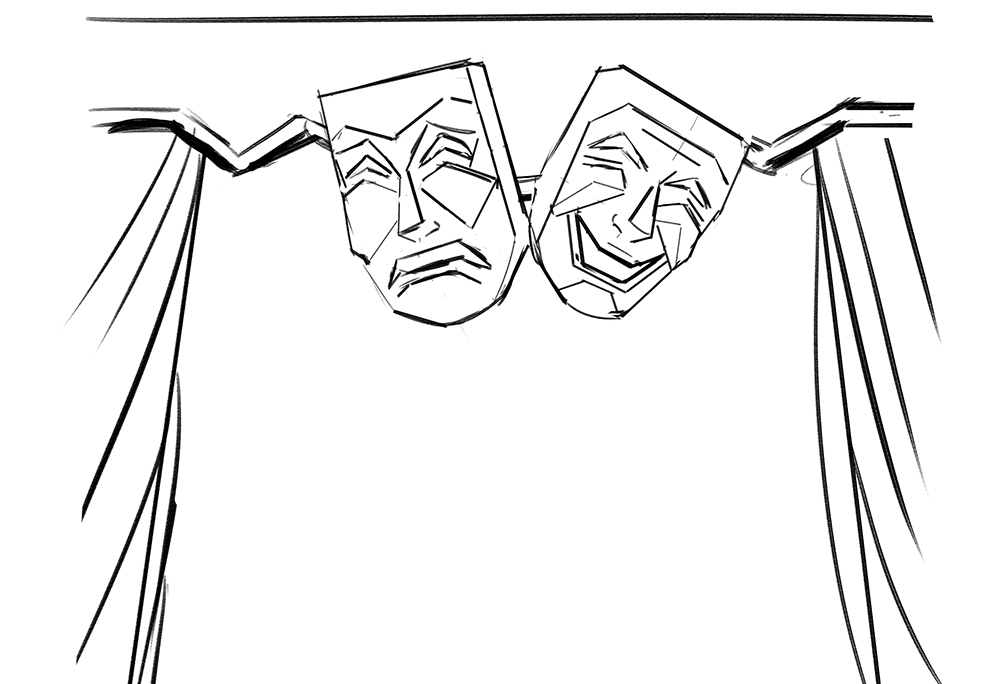Niusha Taati | Contributor
Featured illustration: Three Sisters delivers the theatrical goods in this modern remake of the Chekhov classic. | Arif Kudus
Anton Chekhov’s Three Sisters was brought to life in another production from Theatre @ York’s “Extraordinary Lives: Difference and Ability” series. In this production, based on Susan Coyne’s version of the play, difference and ability were portrayed through the depiction of a deaf sister and a playwright in a tuberculosis sanatorium. Three Sisters ran between January 26 and 28 at the Robert and Julia Foster Acting Studio in the Accolade East Building.
The original Chekhov masterpiece portrays the lives of three sisters who long to return to Moscow but never do. They dream of it, they plan for it and there are no obstacles in their way—but they never get there. Three Sisters is a realist portrait of life, always dreaming and longing for a destination that never seems to arrive. Time passes in this York production, but not much is done other than the passing of time.
Tanja Jacobs, director of the play and recipient of three Dora Awards, added a twist to the character of the youngest sister, Irina, by making her deaf. Irina is full of passion and hope for the future, occupied with dreams of going to Moscow and meeting the love of her life. “I could have her have a different difference but I think the energy with which the character and the actress have to make an effort to be understood is that girl’s story,” says Jacobs.
Alexandra Montagnese did a beautiful job in portraying Irina and her struggles to fulfill her dreams while showing her obstacles in a more physical sense, as she’s constantly trying to make herself understood, both literally and metaphorically. Montagnese started learning American Sign Language, or ASL, in the summer and was expressive and efficient, considering her dialogue was in a language she had recently learned.
Going to the play, you may have expected to see a play in English with an ASL interpreter on the side of the stage. This play did that job perfectly with the help of Sage Willow as the ASL interpreter but goes far beyond that. You found yourself in a fully bilingual environment where the actors spoke in English, sign language and sometimes both.
At the parts that the characters speak only in ASL, we usually had the help of the playwright who narrated the story for us. He was a constant presence in the play but sometimes didn’t narrate the story for the hearing audience, leaving us to watch the actors and try to make sense out of a new language.
“Truthfully, my plan all along was to do a combination of things, so that all the audience would know what was going on all of the time and the way that we proposed to do that was to add a third element, which was surtitles […]
“We decided to experiment with the experience to see what it would be like to watch the show and not know every word that was being spoken, and I thought that it was good and it was better for the experience than listening to a very noisy projector and reading titles that were in a distracting position and not bright enough,” says Jacobs.
We find ourselves watching these characters, trying to understand what their bodies are trying to tell us, trying to watch every motion and being afraid of missing one lip movement, one eye expression. We try to guess the unspoken questions from the spoken responses, and somewhere in between the struggle of understanding what is going on, it all makes sense. We don’t need to hear every word, we get to live the moment.



wilsond882In war of the worlds he thinks he’s a good father then he has a crisis of confidence until he has a life changing experience and becomes a better fatrhe… (pure bullox)